
LIFE & ARTS
From A&M to the silver screen, three Aggies helped bring “The Wild Robot” to life. A5

SPORTS
Maroon and White host Tigers as second top-10 opponent of the season. B1
LAST DAY TO REGISTER TO VOTE IN TEXAS


LIFE & ARTS
From A&M to the silver screen, three Aggies helped bring “The Wild Robot” to life. A5

SPORTS
Maroon and White host Tigers as second top-10 opponent of the season. B1
LAST DAY TO REGISTER TO VOTE IN TEXAS
Faculty allege transparency, communication issues with Office of the Provost
By Nicholas Gutteridge Managing Editor
According to a review by The Battalion, dozens of minors and certificates have had requests for inactivation submitted in the Curricular Approval Request System, or CARS. The requests from the Office of the Provost come after new requirements — developed after June 2023 inquiries into the LGBTQ studies minor — dictate programs will be inactivated if they do not meet a certain enrollment threshold.
Submitting the inactivation request in CARS is the first step in
the process and must occur before other review bodies can approve or deny it. According to Texas A&M’s Standard Administrative Procedure, the request is then routed to the appropriate department and college before it reaches Curricular Services and Provost and Executive Vice President Alan Sams, who is spearheading the current proposal to inactivate 52 minors and certificates. The thresholds are not mandated by the Texas Higher Education Coordinating Board. Once approved, the proposal requires review by the Undergraduate Curriculum Committee — or Graduate Council if it is a graduate
program — and the Faculty Senate before it reaches President Mark A. Welsh III. Multiple faculty members have alleged the inactivations violate shared governance, the concept that faculty have a strong say in the university’s proceedings. Before these inactivations, established norms dictated inactivations were proposed solely by faculty members in departments and programs.
According to a Sept. 23 statement provided by an A&M spokesperson, the Office of the Provost seeks to inactivate 38 certificates and 14 minors due to low enrollment. The new thresholds for minors and un-

Unfounded crimes are crimes that sworn or commissioned law enforcement personnel have investigated and made a formal determination that the report is false or baseless and are, therefore, subsequently withheld from Clery crime statistics. Following are the unfounded crimes as reported for all Texas A&M University, College Station Clery Act locations and Clery Act o enses:
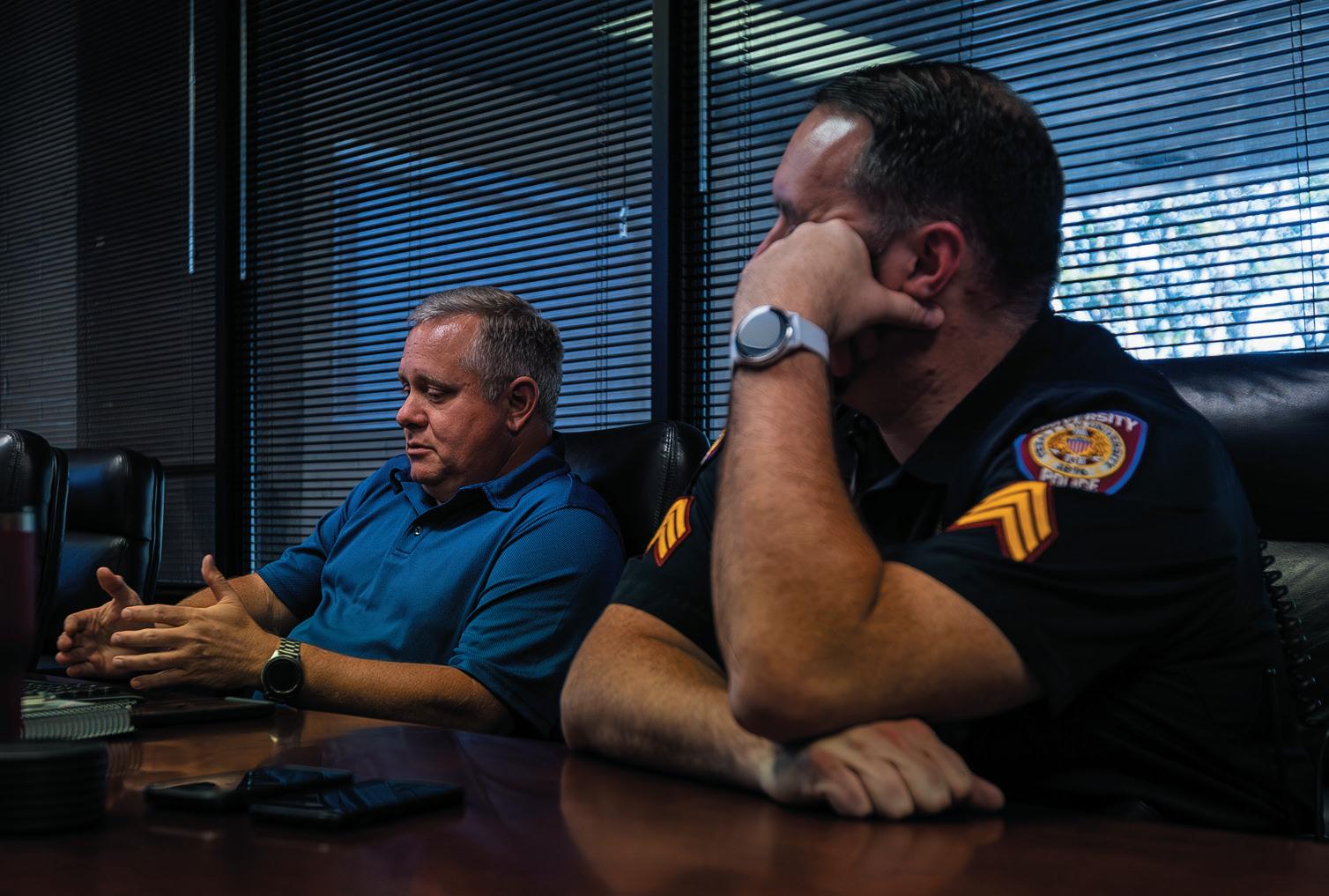
about Clery notifications as well as trends in statistics and definitions to classify specific crimes.
By Mikayla Martinez
Editor
From the guy who makes continuous creepy advances in class to electric scooters mysteriously disappearing, the University Police Department keeps note of how many reports take place on campus.
The Texas A&M University College Station Annual Security Report for 2024 was published on Oct. 1. The 77-page document is a resource for students to learn how to report incidents and define specific crimes under the federal Clery Act and updates the statistics from reported Clery-defined crimes counted in the previous year.
Police Lieutenant of Professional Standards Rodger Paxton III, who specializes in Clery for the University Police Department, said that a breakdown of the 41 theft of motor vehicle reports since 2022 were added to the report. The annual report provides students with information

“We saw a pretty significant increase in theft of motor vehicles in 2023,” Paxton said. “The reason for that was the personal electric vehicles, skater electric scooters and skateboards and stuff like that.”
Along with a breakdown of what specific vehicles were tampered with, an additional explanation of stalking was added to the report. There was an influx of stalking cases in 2023, with accounts of stalking reported on campus jumping from 222 reports in the year 2022 to 372 this past year.
“Stalking is another one that we saw this year go up quite considerably, and the reason for that is just we’re sharing more information amongst the different departments at the university,” Paxton said. “We’re getting more complete information. … Clery stalking and Penal Code stalking are two different animals.”
25,000 student benchmark exceeded in new numbers
By Dhriti Kolar News Writer
Texas A&M’s College of Engineering launched the 25 by 25 initiative in 2013, seeking to have 25,000 engineers across its various locations and programs by the year 2025. As of fall 2023, the college met that goal and reported a total enrollment of 25,132 students across the College Station, Galveston, Qatar and McAllen campuses, as well as its online master’s degree and statewide engineering academy programs. In 2010, studies indicated there would be a shortage of engineers in the future. Along with addressing this demand, the initiative has also allowed the college to increase capacity in engineering programs and admit more students while continuing to maintain high-quality programs, according to Senior Associate Dean for Academic Affairs Harry Hogan, Ph.D.
“We observed that we were having a lot of students apply to our engineering programs and not being … admitted even though they were qualified because of our capacity limitations, so that led to the intentional growth initiative,” Hogan said.
In an article by the A&M engineering college, Texas A&M President Mark A. Welsh III wrote that reaching the goal also reflected the university’s commitment to its landgrant mission.
“The College of Engineering’s dedication to excellence ensures that the university remains at the forefront of engineering education, equipping our students with the knowledge and skills they need to succeed in a competitive global economy,” Welsh wrote.
Over the years, the college has increased the number of incoming freshmen each year. However, nearly 50% of enrollment comes from improving retention rates within the college.
This means that not all Clery accounts of stalking fall under the separate Texas Penal Code definition.
“Penal Code stalking is very difficult to reach the elements of the offense, whereas Clery stalking … is super easy to get,” Paxton said. “I
According to the annual report, stalking is defined by the Federal Department of Education as two or more acts directed toward another person that put them in fear of personal safety or the safety of others and place them under substantial emotional distress.
mean, you have two in two separate incidents, and it puts the person in fear for their safety or the safety of others or places them in substantial emotional distress. And we’ve got a stalking stat.” Personal safety is crucial to combating vulnerability to theft and
“We have data to show that we have had steadily increasing retention rates … over the same time period that we’ve been through this aggressive growth period and I think that’s remarkable,” Hogan said. “We’ve improved our graduation rates over the same time period and a lot of time and effort has been put

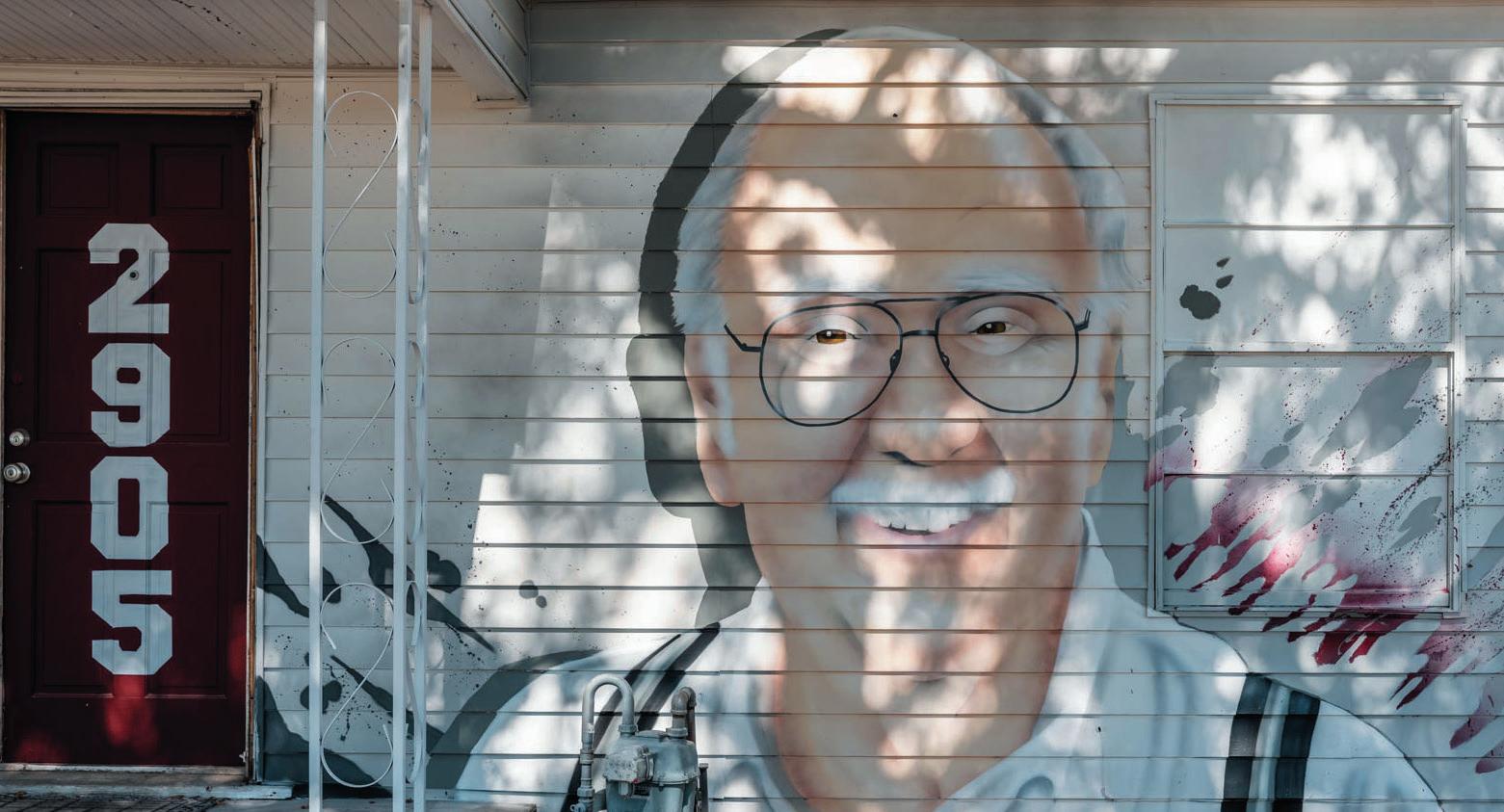
TAMU - Class of 1960
12.26.1938 - 2.28.2024
“ You will find, when you die, that part of yourself which you give to others does not die with you.”
New development aims to honor professor by providing boarding accommodations
By Amber Pettit News Writer
An affordable student housing project is being dedicated to a former Texas A&M professor, Lee Lowery, Ph.D., for his 64 years of service in the civil engineering department.
Housing prices are rising in Bryan-College Station, leaving many students, employees and families struggling to find affordable housing. These rising prices have been problematic in the past decade, leading to calls for more housing options, especially for students.
Kelli Lowery, daughter of Lee, was bequeathed her father’s house after his unexpected passing in February.
Although unsure of what to do with the residence, one thing became clear to Kelli: The house should be used to serve the student community as an ode to the tremendous impact Lee had on the university and his students.
“It is stressful enough going to college,” Kelli said. “But trying to figure out how to pay for it … makes it ten times harder.”
Lowery explained that her father always made sure to provide
for “underprivileged and underfunded students” during his time at A&M, giving out textbooks and resources to those who could not afford them. Mrs. Lowery said that she wanted to continue his legacy of generosity through this project.
Department of Landscape Architecture and Urban Planning professor Shannon Van Zandt has been studying urban housing for 25 years, focusing particularly on housing for low-income populations. Van Zandt said the housing market has caused challenges for students in recent years.
very unusual housing market because it does have so much rental, but especially over the past 20 years, a lot of the new rental is focused on students,”Van Zandt said.
“It is intended to serve students, but rents have increased dramatically because we are renting to individuals instead of to families.”
This has made it significantly harder for low-income students to find housing at affordable rates.
“We sometimes forget that we have students who come from lower income families … and that they have a real need for housing,”
Van Zandt has worked with the City of College Station in response to these challenges, emphasizing the importance of expanding housing options and affordability to meet the needs of the growing student population.
“[College Station] has a new zoning approach to try to produce more affordable housing types,” Van Zandt said. “This is a trend called middle housing. [This] is an effort to try and build something between apartments and single family detached housing … so that we can create different op-
reside in Bryan-College Station.
“We have done all of this on our own money,” Kelli said. “But we did have a very generous donation from Mr. Electric.”
The project requires myriad electrical work to allow multiple students to live in the house. Along with Mr. Electric, a local electrician company, Home Depot and Aggieland Plumbing have also generously offered services to further the completion of the Boarding House.
It is stressful enough going to college, but trying to figure out how to pay for it … makes it ten times harder.
Kelli Lowery Daughter of Lee Lowery
“ “
“Affordable housing is a major problem across the country, and there is a massive shortage of affordable housing everywhere,”
Van Zandt said. “Prices in Bryan-College Station have gotten really high. We are the second most expensive housing market in the state.”
Van Zandt said a large factor for the rise in housing prices is the unique market that Bryan-College Station provides due to the expanding student population.
“Bryan-College Station is a
Van Zandt said. “We are seeing a lot of [homes] that are being occupied by large numbers of students, and that has been a difficulty especially for the city of College Station to try to manage.”
The rise in prices has also made it difficult for faculty and staff to afford housing in the area.
“Particularly our very low income custodial and food service workers … cannot afford to live in Bryan-College Station, so they drive sometimes up to an hour to get here to work,”Van Zandt said.
portunities for renters that include students.”
These new approaches emphasize the importance of affordable housing projects such as the Lee Lowery Legacy Boarding House.
The Boarding House is being used to provide housing specifically to low income, underprivileged students, hopefully cutting down on costs of living for boarders.
The project is still on the pathway toward completion and is being funded and operated solely by Kelli and her husband, who do not
The project still requires some work before its completion, and help from students and other volunteers would be greatly appreciated by Kelli and her family, she said.
“It would really be awesome if we could get hands out there,” Kelli said.
However, deciding what to do with the project after its completion has proven to be a difficult task for her.
“[University officials] wanted us to hand the property over to Texas A&M,” Lowery said. “But I am unwilling to do that.”
Lowery describes that while she loves the university, she “wanted [Lee’s] house to be something separate from that” and decided it would be more beneficial if she continued the operation on her own terms, in fear that the house may not be put to its intended use.
Lowery plans to go engineering department and the A&M aid office to find students that would benefit from the Boarding House.
Professor of sociology
Stjepan Meštrović talks testimony in April 2004 U.S. invasion of Iraq
By Cameron Gibson Senior News Reporter
It has been 20 years since photos were released of U.S. soldiers committing war crimes and human rights violations against detainees at Abu Ghraib prison in Iraq. According to a Human Rights Watch, or HRW, report last year, tortured Iraqis still have no clear way to ask for compensation or recognition from the U.S. government.
Stjepan Meštrović, professor of sociology at Texas A&M, was an expert witness at the trials of three soldiers who were involved: Lynndie England, Javal Davis and Sabrina Harman.
In April 2004, CNN aired photos of U.S. soldiers abusing Iraqi prisoners at the Abu Ghraib prison during the American occupation of Iraq. Photos included England holding a naked male prisoner on a leash and another of her pointing to a naked prisoner being forced to masturbate. Others show a smiling Harman and another soldier, Charles Graner, posing behind naked Iraqi detainees being forced to form a human pyramid as well as smiling for a photo over the corpse of Manadel-al-Jamadi — an Iraqi national — after he was tortured to death by CIA personnel.
Davis was not in any of the released photos but admitted to abusing prisoners in response to direct instructions by intelligence officers.
HRW researcher Sarah Sanbar specializes in Iraq within the Mid-

dle East and North Africa division of the organization. She said Abu Ghraib was a defining moment for many people of that generation and still resonates today.
“I think you would be hardpressed to find an Iraqi over the age of, I don’t know, 10 or 15 that doesn’t know Abu Ghraib and doesn’t know what happened there,” Sanbar said.
“The line by the Bush administration was that this was the result of a few bad apples,” Meštrović said. “And we took care of it by putting them in court-martial.”
According to Meštrović, seven low-ranking soldiers were court-martialed and the media was not critical of the government’s position that this was just an unusual event.
Meštrović said that the soldiers on trial were “young kids” who “took pictures of everything, their food, palm trees, cats, dogs, bricks, the living conditions.”
“And so they really took the pictures not out of any kind of evil
intent, but more like my students now take pictures of what they eat and then they post it,” Meštrović said. “I think the public just simply doesn’t have the big picture.”
Meštrović said psychologists who evaluated the soldiers were also expert witnesses at the trial.
“Not one of them was a sadist or a narcissist or a borderline personality disorder — not one,” Meštrović said. “What did show up in those tests was PTSD, depression, learned helplessness.”
Meštrović said he was involved in about 12 similar trials in total, many of which were murders committed by soldiers.
“These were like, again, 18to 20-year-olds who were given unlawful orders,” Meštrović said. “And nobody bothered to go after the colonel who gave the unlawful order.”
Meštrović alleged there was an order given to kill every military-age Iraqi on sight, saying the army put the low-ranking soldiers in prison and kept secret the actu-
al order given by the commanding officer, a colonel, even though everyone testified they heard that order given.
“I don’t think most people even know that there were indeed civilian contractors at Abu Ghraib,” Meštrović said. “Or that there was FBI and CIA. Or that, I don’t want to mention the group, but an OGA, other government agency, that literally beat an Iraqi general to death with fists. That was never put on trial. … It’s almost scary to go into this detail, but to deflect that incident I just told you about, they put the Navy SEALs who delivered the Iraqi general to Abu Ghraib on trial. … Those guys were found not guilty but the ones who did do it — never put on trial.” Sanbar discussed systemic issues that faced survivors seeking recognition or compensation.
“We haven’t really been able to get any sort of justice for survivors through U.S. courts against the military personnel that abused
them because they benefit from immunity as a result of this 1946 law that gives the government immunity for any actions arising out of the conduct of its forces engaged in combat,” Sanbar said.
Last year, HRW published a report entitled “Iraq: Torture Survivors Await US Redress, Accountability.” The Department of Defense, or DoD, did not reply to a right-of-reply letter before publication of the report but did agree to meet after it was published.
Sanbar said she had meetings with the Pentagon, State Department and Congress trying to discuss this issue. Sanbar said although the DoD claimed they took all allegations very seriously, there is no pathway available for survivors to raise a complaint and have their case heard about their torture and abuse at Abu Ghraib.
Sanbar interviewed someone who was at Abu Ghraib, who sent her a message after a photo came out in December 2023 of kneeling Palestinian men stripped to their boxers with their hands tied behind their backs, saying ‘The Israelis learned it from the Americans.’ Sanbar said the ex-detainee told her it was triggering for him to see those images because it reminded him of being held in detention centers in 2003 and 2004.
“Seeing it happen again at the hands of a U.S. ally — just he felt so angry and hurt,” Sanbar said.
Meštrović teaches SOCI 446, Sociology of War Crimes, and said many of his students are in the Corps of Cadets.
“I give them practical suggestions for when they’re in the military about the chain of command and what the Geneva Conventions really say, like photographs are forbidden,” Meštrović said. “But they don’t know that. Nobody talks about the Geneva Conventions, for example. And the Army didn’t train its people in that.”
dergraduate certificates require 10 graduates in the last two years or a minimum current-year enrollment of five students. Graduate certificates must have six graduates in two years or a minimum enrollment of three students.
As of publication, CARS shows most programs have submitted inactivation requests, with multiple at different stages of the process. Documents previously reviewed by The Battalion show the Office of the Provost required programs to be entered into CARS by Friday, Sept. 20.
A Sept. 24 statement said the full list of impacted programs will not become public until it goes before the Faculty Senate “to allow for the appropriate discussion and decision-making” and to “allow faculty, deans, department heads and the curricular committees to have their review.”
Multiple faculty members have protested the decision in various ways, some through votes. Faculty from the Department of Geology and Geophysics voted to keep the environmental and engineering certificate with 87.5% in favor. On Wednesday, 30 faculty from the Women and Gender Studies Program unanimously voted that they “do not support the inactivation of the WGST minor.”
“This was a huge turnout and really shows how strongly the WGST faculty support the LGBTQ mi-
stalking — social media is not an exception Paxton said.
“We get a lot of online stuff, a lot of text message stuff, even potentially some of the scams that students fall victim to,” Paxton said. “Some of that stuff even gets picked up as stalking if there’s more than one course of conduct of it.”
The officers recommend that in light of an increase in the theft of personal motor vehicles, such as e-scooters, students should remain vigilant, note their serial numbers and add recognizable personal touches to their property.
“You can see here we’ve had a little bit of an increase in burglary,” Paxton said. “A lot of that, I think, is just more people reporting to us.”
There are various ways to report crime on campus. From Title IX to Tell Somebody, students can seek campus-provided resources defined within the crime report. The University Police Department’s phone number is on the back of every student ID, according to sergeant and public information officer Jonathan Blythe.
“I don’t want to downplay any of these things because we do want
nor,” Theresa Morris, the WGST program director, said.
At least two certificates were already set for inactivation by faculty before the provost’s order: communication and global media and communication, diversity and social justice. According to documents reviewed by The Battalion, the provost overruled at least 12 appeals made by colleges to save certain minors and certificates.
An A&M spokesperson said the thresholds now being used to inactivate 52 of A&M’s total 320 minors and certificates began development last year.
“In June 2023, inquiries around the LGBTQ minor that had only a few enrolled students prompted the university to examine its programs and identify 70 certificates and minors that had no or very few graduates or enrollees,” the statement reads.
The spokesperson did not expand on the exact inquiries. However, an article from conservative outlet Texas Scorecard published on June 27, 2023, claimed “taxpayer-funded colleges are promoting LGBT ideologies.”
Scorecard is published by “hardline conservative activist” Michael Quinn Sullivan, A&M Class of 1992, and chaired by Tim Dunn, one of the largest Republican donors in Texas.
The inquiries mentioned in the statement led to the provost’s office partnering with the Council of Deans to set the thresholds for
them to still report this stuff,” Blythe said. “I don’t want them to feel like it’s not worthwhile. Let us evaluate it. Let us look into it. Let us investi gate and find out the truth. The truth is, if this is something criminal, a lot of times it turns out it’s not. … I would still want them to always report. Always call us. Always tell us what’s going on. Let us look into it.”
The Clery reports differ from the lower number shown in the FBI’s National Incident-Based Reporting System, or NIBRS, as the national standard for law enforcement crime data is different. According to Bly the and Paxton, these NIBRS statis tics provide a more accurate repre sentation of how much crime occurs at the university.
“low-producing” programs, which was charged to a subcommittee headed by Debbie Thomas, associate provost and the dean of the College of Marine Sciences and Maritime Studies in Galveston.
Sams shared a comment with The Battalion on Sept. 30 further explaining the inactivations.
“This entire effort stems from the fact we created and are currently maintaining programs for which there is little to no demand,” Sams said. “Faculty engagement is built into the full review process for creation, changes and inactivation, which all of these minors and certificates will move through in the coming weeks. This full review process is a key element of shared governance. As we move forward, we are committed to developing and maintaining credentials of value to our students, and establishing and enforcing thresholds for low-producing minors and certificates is one step in that process.”
A spokesperson said all enrolled students can complete the programs, and the associated courses will stay intact. According to a statement, on average, there is less than one student enrolled per certificate and 1.2 per minor. The Office of the Provost is not calculating the fall of 2024 in its calculations. For a program approved in the fall of 2022, the provost only considers the following when determining threshold complicity:
• Graduates in 2021-22 academic year
According to CARS and other documentation reviewed by The Battalion, the following programs, listed alphabetically, have been scheduled for inactivation by the provost.
Editor’s note: These are incomplete and unofficial lists.
Analysis, Design and Management of Energy Conversion Systems Asian Studies Control of Mechanical Systems Design and Simulation of Mechanical Systems
Geophysics
Global Art Design and Construction Global Culture and Society Global Health Lesbian, Gay, Bisexual, Transgender, and Queer, or LGBTQ, Studies Natural Gas Production and Processing Petroleum Engineering
Graduates in 2022-23 academic year
• Students enrolled in the fall of 2023 and spring of 2024
As such, newer programs — such as the environmental and engineering geology minor — are being inactivated despite having 33 fall of 2024 enrollments, well above the five student requirement. Similarly, the landscape management certificate is getting inactivated despite 10 student enrollments.
The University Curriculum

“Comparing it to a university with 15,000 students, it makes it look like this scary place with all this crime,” Blythe said. “But we have, I think this year, 79 [thousand] is what they said the other day, 79,000 students like that is a lot. That’s a city. I mean, our crime rate is low when you look at it.”

into student success programs and support resources.”
With an increasing number of students, the college added additional faculty members as well. They also partnered with the Math Learning Center and the Academic Success Center to introduce resources to improve student success.
“The increase in the number of peer [Teaching Assistants] is a very significant increase in terms of resources,” engineering professor Tanya Wickliff, Ph.D., said. “There’s been an increase in the number of faculty, and then incorporating technology, we moved to a different platform with Canvas … because some believe it had additional functionality … So I think in that respect … the College of Engineering in general has done a pretty good job.”
Despite an increasing number of students and a subsequent rise in class sizes, Wickliff said her personal teaching styles have remained unchanged.
“I always try to bring real world examples, because I’m a professor of practice,” Wickliff said. “So I try to bring corporate examples, I
try to address transitional issues into college, … study skills, time management, preparing for your internship … and the subject matter has been consistent. So I think that for me personally, my teaching style is akin to one that is participatory and team-based, and so it hasn’t changed.”
Apart from adding more faculty members and resources, programs such as the Entry-to-a-Major process, or ETAM, though not a direct result of 25 by 25, have helped improve retention rates within majors. Departments within the college
Committee, the next step in the inactivation process for multiple programs, is set to meet on Friday. It’s unclear if it will vote on inactivations. Committee members did not respond to inquiries.
A&M’s Faculty Senate is set to meet on Oct. 14 in Rudder Tower. As of publication, neither the UCC agenda nor the Faculty Senate agenda has been updated to include votes on inactivations, but a UCC member said the committee plans to discuss the inactivations on Friday.

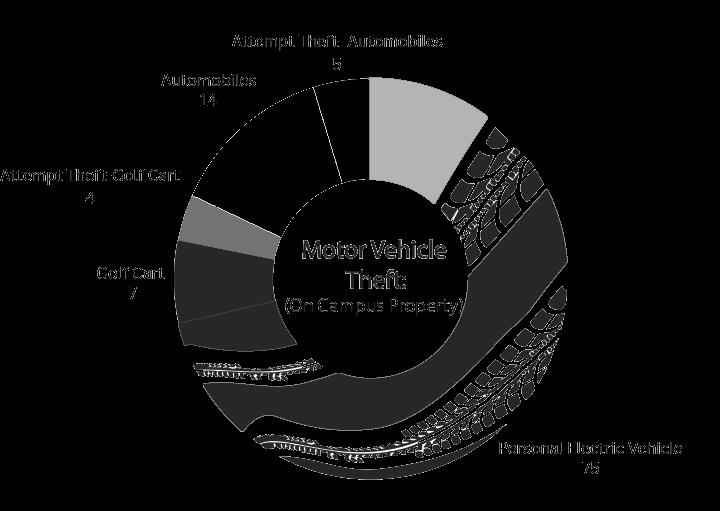
have also increased enrollment capacities to cater to the growing student body.
Despite the growing number of engineering majors on campus, the demand for Aggie engineers has continued to grow, with more companies actively seeking to recruit A&M graduates for full-time positions and internships.
“Aggie engineers are some of the best, so I believe that all of our graduates have a great foundation, we make sure they have … exposure to something beyond just academia,” Wickliff said. “They’re getting ex-
posed to work experience, research experience and, ultimately, all of these engineers are needed to solve these real world problems and global issues, and we have a very diverse global student body represented.”
With the goal for 25 by 25 reached, the college aims to maintain these enrollment numbers, while also improving different areas such as academic programs and curriculums within departments to remain responsive to the needs of students and industries.
“We have a new dean who started just this past spring,” Hogan said.
Those guys were found not guilty but the ones who did do it — never put on trial, no one talks about it, no one knows who they were. Except they know.
Stjepan Meštrović Texas A&M professor of sociology
“He’s appointed a committee for strategic planning and that strategic planning committee will start working over the next months and probably put out a report in six to 12 months.”
Furthermore, the college is working towards growing its graduate programs, specifically the master’s programs.
“One of the things we want to continue to work toward is having our students … think about graduate school, because … the nature of these technical challenges is something that I think our students will be better equipped to address if they have a little bit more education,” Hogan said
Despite the growing enrollment, A&M’s engineering programs continue to foster a sense of community and fellowship within the college.
“I think for the size of our campus and our engineering program, we do surprise people in terms of the level of personal attention, the level of connectedness and community that you feel with just a little bit of effort to get involved and get connected,” Hogan said. “You’re going to find it easy to realize that you are part of this family, that you’re part of this bigger community.”

By Kaleb Blizzard Opinion Writer
What was the most striking moment in the Trump vs. Harris presidential debate?
I would wager that the vast majority of people probably remember Trump’s bizarre allegation about Haitian migrants eating pets in Springfield, Ohio. Alternatively, you might think of Harris refusing to answer whether or not Americans were better off four years ago than they are today. Or maybe the most notable moment to some was the ironic “I’m talking now,” which Trump interjected into the middle of his verbal barrage against Harris’s change in priorities for her campaign.
We even see some similarily strange moments in the recent vice presidential debate, despite it being more cordial. Think of Tim Walz’s “I’ve become friends with school shooters” and JD Vance’s refusal to answer whether or not he believed the 2020 election was stolen.
Whatever you think the funniest — or maybe most depressing — spat was between any of
those candidates, it probably didn’t have much to do with policy or substantive changes that mean anything to anyone. In fact, there were multiple times throughout the presidential debate when the conversation strayed completely from policy, instead focusing on the size of each candidate’s rally or other irrelevant topics.
Political discussion is so divisive in 2024. Let’s go back to Obama vs. Romney, Clinton vs. Bush or all of those other debates of an America gone past. They were so civil, so informative and so polite. Isn’t that right?
Perhaps they were informative, civil and polite by today’s standards, but modern standards for the quality of debates are incredibly low. Unfortunately, the format of debate has never truly been informative, properly civil or particularly useful in the ways that it should be. Instead, it has usually served as a type of petty bloodsport where voters receive information in one of the most inefficient and polarizing ways possible.
Don’t misunderstand me: Debates can sometimes be useful. There have been occasions where
we see a substantial policy disagreement come out, even if it is presented in a confusing or distorted way.We even saw this in last month's presidential debate, when Trump was asked if he would sign a bill banning abortions nationally. He then turned to Harris and asked her if she would ban lateterm abortions. Unfortunately — and as we might expect — neither of them answered. But it does help to elucidate something about each candidate to the viewer.
Nonetheless, one of the most important elections in the modern world should not be decided by resorting to sub-optimal displays of each candidate’s views. Even if debates have been and could potentially be somewhat civil, informative and useful, we should seek to use a format that fundamentally incentivizes the candidates to answer questions satisfactorily.
What do I think this format is? Podcasting.
Although it is a relatively recent phenomenon in infotainment, podcasting has its roots in radio broadcasting, which has been used by presidents since FDR’s “Fireside Chats” during World War II
and the Great Depression. Roosevelt, and other presidents after him, recognized the potential of this powerful medium to provide a personal insight into the president’s thoughts. It could serve as a unifying force: a powerful way for the president to respond to concerns that normal people might have but not be able to get answers to otherwise.
Unfortunately, this medium has not carried over to our elections.
During the space of a twohour podcast, a candidate might have time to explain a variety of their policy prescriptions on topics ranging from abortion to immigration to the economy. Ideally, such a podcast would be held with only one candidate, without an audience and with questions that don’t allow the candidates to obfuscate their answers without being noticed by the host (and presumably those watching at home). On the other hand, our modern debates have none of these safeguards, nor do most viewers learn anything except to reaffirm their preconceived notions about their preferred candidate.
According to a CNN flash poll
taken right after the presidential debate, only 18% of polled viewers even considered changing their minds during the debate. Of those, only 4% actually ended up changing their minds.
If you think 82% of the 67 million people who watched that debate are so deeply informed on the issues that they shouldn’t even consider another candidate, then there’s no reason to have any sort of conversation in the first place.
On the other hand, if you believe — as I do — that this speaks to a structural issue in the format of debates, then take this statistic as a warning emanating from the heart of a deeply partisan America. We are in desperate need of real, substantive conversation in the current political climate. If it was customary for a presidential candidate to have a real, twohour-long conversation with an insightful host, then we might be in a much different place than today. Now imagine if 67 million people sat down to watch that. Imagine what could change.
Kaleb Blizzard is a philosophy sophomore and opinion writer for The Battalion.





By Shalina Sabih Features Writer
Audiences around the globe gathered in darkened theaters on Sept. 27 to experience the captivating world of “The Wild Robot.” As the screen illuminated with a stunning palette of blue and gray, viewers were transported into a beautifully-crafted narrative that blurs the line between technology and nature.
Among those behind this cinematic masterpiece were three Aggies: former student Toby Johnson, Class of 2023, along with visualization graduate students Anna Keniston and Sean Kerrigan, all connected through Texas A&M’s School of Visualization.
“The viz program is incredible at A&M,” Kerrigan said. “We have so many Aggies in the industry and the network has been such an incredible resource to me.”
Together, they played vital roles in the film’s creation and navigated the precise and intricate animation pipeline. This process demanded seamless collaboration at every stage, from the early storyboarding and design phases to the final rendering and post-production.
Each stage of the animation pipeline built upon the last, with each intern contributing a crucial element to bring “The Wild Robot” to life.
Lighting artist intern
“I never really had any other thing I wanted to do in my life,” Johnson said. “Pretty early on, I knew that this is what I wanted — to pursue film, especially animation.” Johnson, a proud fourth-generation Aggie, grew up with a deep love for animated films. His father often recommended movies,
which sparked Johnson’s early fascination with the animation process. He found comfort and inspiration in films like “Ratatouille” and “Shrek” and soon realized that creating movies like those was his true calling.
At the end of his junior year, he spoke to former students and reached out to people in the animation industry, which led him to an opportunity to work on “Wild Robot.” He previously worked on “Kung Fu Panda 4” and then shifted towards creating a hand-painted style of animation.
He said this movie was something he had never done before and he was eager to start.
“This movie was the perfect blend of unique, original project,” Johnson said. “DreamWorks hasn’t done something like this for a while.”
Johnson’s job as a lighting and compositing artist, taking the unrendered animation and composing and rendering the entire shot.
He said his team took shots from the movie and made it something one would see on the big screen.
“I do all of the [digital] lighting and I put them in the scene,” Johnson said. “I do all the final tweaking and color grading and sending it off.”
Johnson said he had tools that helped develop and maintain the artistic brush-stroke aesthetic of the movie. Johnson worked on two sequences from the movie and approximately a minute of footage made by him is featured during the movie.
Look development intern
Keniston said she always loved to draw and always enjoyed animated movies. Her parents were Aggies who supported her dreams to work on these movies and led her to A&M.
“Right when I graduated is when I got my internship,” Keniston said. “‘Wild Robot’ was my second internship and it was a really fun experience that taught me multiple skills.”
Her job as a look development intern consisted of creating painted textures, defining the color and roughness values and how the assets reacted to light. This team added the color, any hair required and ran the stage where objects get color before they are placed in a scene.
“I was assigned assets, which are props and characters that come down the pipeline,” Keniston said. “My job was to find the color, roughness and height of the objects and I would show them to my supervisors.”

Keniston said she worked on many characters and she knows two of those characters and one environment made it into the movie. She said “Wild Robot” was a style that had never been

achieved before, and her team
had no idea what the final image would look like. Regardless, Keniston was excited for the directors’ vision to come to life.
Layout artist intern
Kerrigan was only 7-years-old when he became intrigued with a how-to-draw Spongebob special. When he heard about A&M’s visualization program in high school, he knew exactly where his dream would lead him. Kerrigan scored his internship with the help of Jon Gutman, who was one of his mentors while he was at A&M.
When he was a junior, he took a class with professor Michael Walsh and learned layout was an actual position that worked with cameras and editing.
“When I heard what a layout artist was, I knew this is exactly the job I want to do,” Kerrigan said. “I get to do animation for characters, and my favorite thing is to apply film language to animation.”
A layout artist is similar to a cameraman or a cinematographer. They are completely in charge of the camera and what happens in the frames. They use the same focal lengths and camera moves as in live-action movies, making the animation as natural as possible. Kerrigan said they work at a very quick pace and the shots can vary depending on what they need.
“We’re mostly working off storyboards of every single shot on every single sequence in the movie,” Kerrigan said.
Kerrigan said layout artists have a method they call “going off boards,” where they work with the director to create a sequence that was too difficult to illustrate with a simple storyboard in terms of camera composition, blocking, timing and editing.
Layout is one of the last gener-
alist positions in animation. These artists get to do a little bit of everything to plan the final shot, which brings the team toward the end of the pipeline.
The end of the pipeline
The intern experience was very collaborative amidst the team effort to get “The Wild Robot” across the finish line. The directors were excited when content was created and presented to them by production teams, which was very motivating to the different groups.
Johnson said the team had energy and knew it was making something special. He said DreamWorks was one of the best workplaces in terms of culture, and the relationships he built with people was a big leap for him to feel wanted and motivated.
To score a position as impactful as these DreamWorks positions, the interns said it was very important to network, reach out to people and form meaningful connections. This helped create an A&M pipeline for future opportunities.
“Be good at working with other people and be flexible,” Keniston said. “Feedback is the fastest way to go and getting the job is 60 percent networking and 40 percent talent.”
Kerrigan said the Aggie Network is something people should take advantage of. Most A&M graduates understand where students come from, and they want to help and connect them to mentors, Kerrigan said.
“Working on this movie was an absolute blessing and gift, and it’s an indescribable feeling I would not have been able to feel if it wasn’t for the connections through A&M,” Kerrigan said. “I really want people to know how much work the artists and employees put into this piece of art.”

1 Bumbling
4





October 3, 1990
East and West Germany merge into a single country on what is now known as “Unity Day.”
October 4, 1927
Sculpting starts on Mount Rushmore, beginning with the face of George Washington.
October 5, 1947
Harry Truman delivers the first presidential speech to air on TV.
October 6, 1866
John and Simeon Reno steal $13,000 — worth about a quarter million today — in the first train robbery in America.

October
October
October

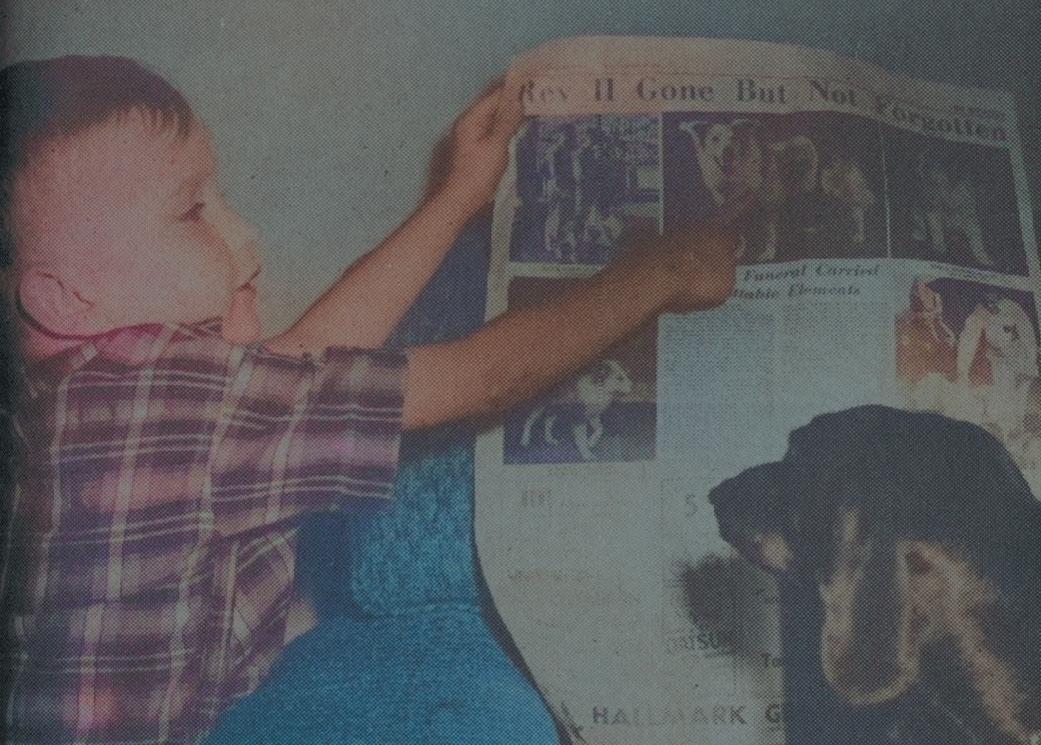




No. 9 Mizzou Tigers visit College Station for first time since 2014
By DJ Burton Sports Writer
No. 25 Texas A&M football is hot, and so are the No. 9 Missouri Tigers.
The two squads have played 16 times since 1957, with the Aggies taking nine of the games. Missouri, despite losing the first six matchups against the Maroon and White, has won seven of the last 10.
The Aggies and Tigers will forever be associated with each other. After the collapse of the Southwest Conference, four SWC schools combined with the Big 8 Conference to form the Big 12 in 1994, with play beginning in 1996. A&M and Mizzou were charter members.
In 2011, the SEC announced the addition of two more programs: A&M and Mizzou. The
two would begin play in the conference in 2012. Since then, the Aggies have a conference record of 54-45 and the Tigers sit at 4851.
This season, the Tigers head to College Station coming off a bye week. Their last game resulted in a victory in a double-overtime thriller against Vanderbilt. Missouri is 4-0 with a 1-0 record in SEC play. During the bye, the team did not focus on A&M, but rather on itself and saved game preparation for this week, Missouri coach Eliah Drinkwitz said on The Bobby Bones Show.
The Aggies head into the game 4-1 and atop the SEC with a conference record of 2-0. While favored at home, the Maroon and White will look to upset the top10 team. Their hot streak continued last week with a 21-17 win over Arkansas in the last Southwest Classic held at AT&T Stadium in Arlington.
Coach Mike Elko is not unfamiliar with Drinkwitz, he explained in Monday’s press confer-
ence. “A lot of respect for him,” Elko said. “[I’ve] known him for a long time, going all the way back to when he was the offensive coordinator at NC State and I was at Wake Forest, and that was the first time we went head to head with each other. Just a lot of respect for who he is, how he runs a program, what they do.”
The two coaches faced off as coordinators in 2016. Drinkwitz and Wolfpack’s air attack proved too much for Elko’s Demon Deacons. Wake Forest could not surmount NC State’s early 17-0 lead, and ultimately succumbed, 33-16.
Now with the Aggies, Elko is out for revenge as a head coach. College Station will be home to SEC Network’s traveling shows ahead of the game. “The Paul Finebaum Show” will be live from 2-6 p.m. at Aggie Park on Friday. On Saturday, “Marty & McGee” will be live from
Senior quarterback poses tough challenge for Wrecking Crew
By Kolton Becker Sports Writer
One of the top games circled on the SEC schedule this weekend by many is No. 9 Missouri traveling to College Station to take on No. 25 Texas A&M at 11 a.m. on ABC. It features a high-powered Missouri offense looking to create havoc against a gritty A&M defense.
Led by senior quarterback Brady Cook, Missouri is 19th in the country in total offense, averaging 472.2 yards per game with 6.07 yards per play. Cook is completing 68.7% of his passes for 946 yards with four touchdowns and one interception.
“I think he is extremely talented,” coach Mike Elko said. “He can throw the ball all over the field, makes plays with his feet, extends drives, makes plays on third down. He makes a lot of plays with his feet, a lot more than what I think people give him credit for, and he is such a winner.”
Cook has been a scary piece to coach Eliah Drinkwitz’s puzzle. He has been utilized in the run game, using his legs to extend plays, which has resulted in four rushing touchdowns to lead the team.
“It’s been a huge focus on communication and making sure we’re on the same page across the board with what we’re doing,” Elko said.
Elko’s defense is welcomed by
the Tigers’ ground game from senior running backs Nate Noel and Marcus Carroll, who carry a workload of the run game for the Tigers.
On 69 carries, Noel has rushed for 441 yards, averaging 6.4 yards-percarry with two touchdowns, along with Carroll’s 35 carries for 164 yards with two touchdowns.
For the Maroon and White defense to find success, it will likely have to stop the run in the interior while applying outside pressure to prevent Cook from getting outside the pocket and taking off to make an explosive play.
“I think, defensively, we play pretty good snaps, but we have too many explosives,” Scourton said after last week’s win over Arkansas.
“Once we limit the explosives, I think this defense can be really special.”
In the wide receiver room, Missouri has a dynamic duo in senior Theo Wease Jr. and junior Luther Burden III, who leads the team with four touchdowns despite his 5-foot11, 208-pound frame. Both have combined for 544 receiving yards.
The coaching staff will need to push the defensive backs to limit significant plays in the secondary. With a lot of pressure recently in onescore games and playoff aspirations still on the line, the secondary must cover all field boundaries. Winning the turnover margin will be crucial to stay in the game.
If A&M can make red zone stops and prevent Missouri from converting on third down, it will be interesting to see how the Aggies’ offense responds against the Tigers’ defense.

Quarterback Reed aims to continue SEC success
By Andrew Paredes Sports Writer
A 4-1 start and a 2-0 mark in SEC play is a dream scenario for a No. 25 Texas A&M football team that lost its season opener in ugly fashion and has been without its starting quarterback for three consecutive games.
The Maroon and White’s offense, however, faces the best defense it’s seen since its opener against Notre Dame with No. 9 Missouri coming into town on Saturday.
The Aggies’ offense has established itself as a run-heavy unit, rushing for more than 200 yards in three of its last four games.
Redshirt freshman quarterback Marcel Reed has filled in for injured redshirt sophomore QB Conner Weigman in the past three games.
With Weigman currently slated as a game-time decision to start, Reed is ready to fill in if called upon for a fourth consecutive game.
“He’s young,” coach Mike Elko said Monday. “There are still some ups and downs as we move forward. We have a ton of confidence
in him.”
The Maroon and White have yet to throw for 200 yards in a game this season. A&M will have to find success through the air and force the Tigers to open things up so the Aggies can get their rushing attack going.
A major challenge for A&M’s passing offense is junior corner backs Toriano Pride Jr. and Drey den Norwood. Pride transferred to Missouri after playing at Clemson for two seasons, and Norwood, a transfer from A&M, was a key part of the Tigers’ secondary in 2023. There weren’t many expecta tions for the Tigers’ defense enter ing the 2024 season after their 2023 defensive coordinator, Blake Baker, left to take the same role at LSU. But so far, Missouri has proved doubters wrong. “Defensively, they’re eighth in the country in scoring defense and third in the country in total de fense,” Elko said. “It’s going to be the best one we’ve seen to this point.”

to trust their personnel to hold off the passing
Both teams are facing their biggest challenge yet, and it bodes for an exciting matchup that forces both the Aggies and the Tigers to trust in their weaker
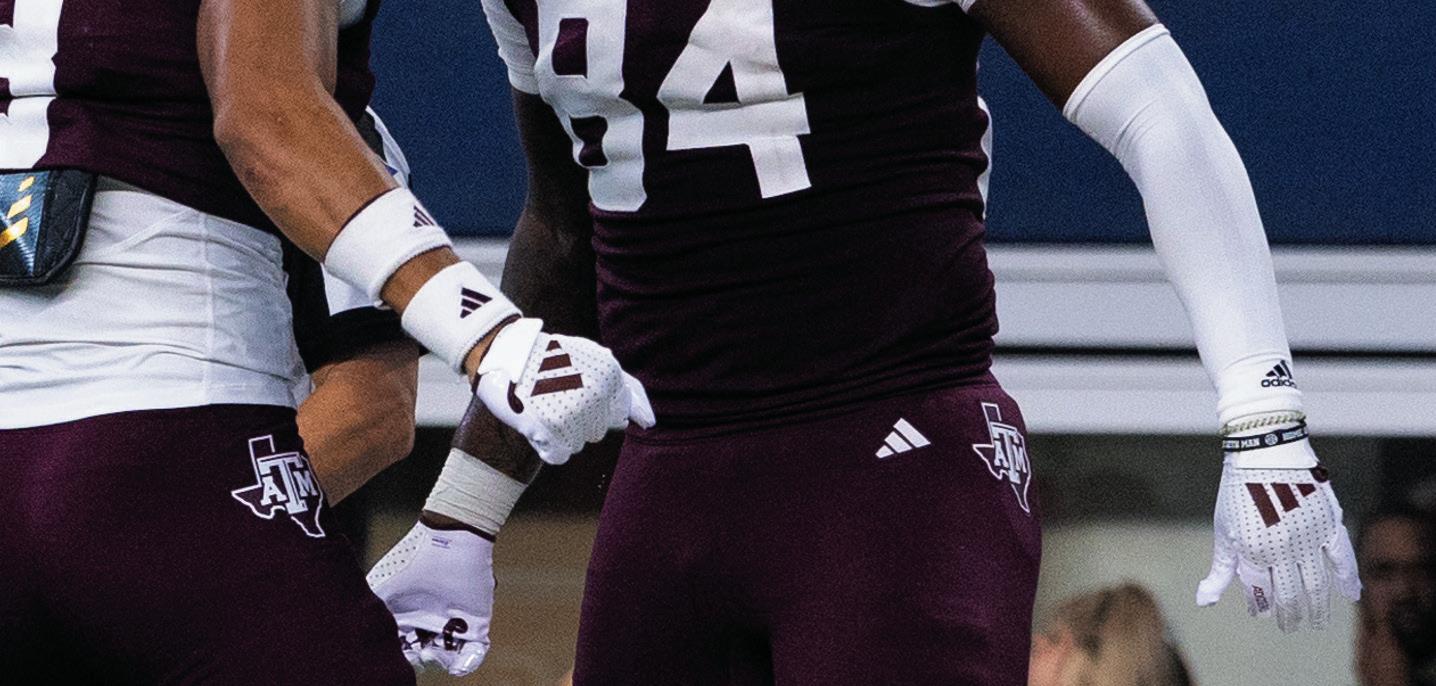
By Matthew Seaver Asst. Sports Editor
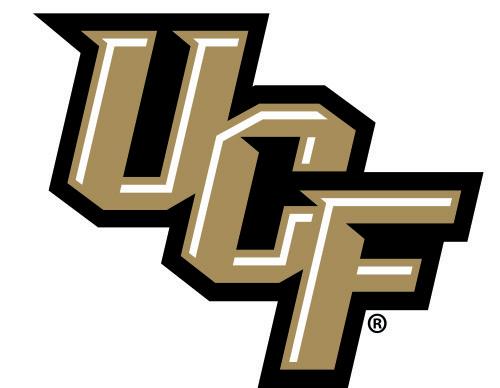

Saturday, Oct. 5 — 6:45 p.m. on SEC Network Ben
UCF was riding high before being humbled in Week 5 by the Colorado Buffaloes and coach Deion Sanders. The Gators and coach Billy Napier enjoyed their bye week after what has been a very up and down campaign to begin the 2024 season. If Florida wants any chance of success against UCF, it needs to focus on slowing down the No. 2 rushing offense in the country.

A masterclass by redshirt senior quarterback Graham Mertz is the only chance Florida has of staying in this game. While the Knights’ redshirt senior QB KJ Jefferson no longer plays in the SEC, the twohour drive from Orlando, Florida to Gainesville should give him just enough time to practice his gator hunting skills. Florida, get Napier’s pink slip ready.

Saturday, Oct. 5 — 6:30 p.m. on ABC Razorback Stadium — Fayetteville, Arkansas
The 4-0 Volunteers bashed the Sooners in Norman, Oklahoma in Week 5, forcing three turnovers and procuring 345 yards of offense. Arkansas was handed its second loss of the season after turning over the ball three times versus Texas A&M in AT&T Stadium. The Razorbacks and offensive coordinator Bobby Petrino failed to assemble any semblance of offense in the second half
of Week 5.
Things aren’t getting any easier, as the Volunteers have the best defense in the country. Not to mention redshirt freshman QB Nico Iamaleava, whose excellent play has him as the sixth-ranked betting favorite for the Heisman Trophy, according to BetMGM. The Volunteers will have plenty of leftover bacon to bring back to good ol’ Rocky Top.
Prediction: Tennessee 48, Arkansas 20


Saturday, Oct. 5 — 2:30 p.m. on ESPN Williams-Brice Stadium — Columbia, South Carolina
After being upset by the Kentucky Wildcats, 20-17, in Week 5, Ole Miss and coach Lane Kiffin have been labeled frauds. South Carolina was on a bye and has a record of 3-1 behind the legs of senior running back Raheim “Rocket” Sanders and the defensive presence of fifth-year edge rusher Kyle Kennard.
It turns out having a cakewalk to begin the season and boost stats
was not the key to success for Ole Miss. “This can be a really big challenge on us improving this week,” Kiffin said. The Rebels will need to improve for a shot at taking down the Gamecocks, who were one play away from beating LSU in Week 3 and being amongst the undefeated in college football. Don’t get cocky, it’s gonna get rocky in Williams-Brice Stadium.
Prediction: Ole Miss 27, South Carolina 17


Saturday, Oct. 5 — 2:30 p.m. on ABC Sanford Stadium — Athens, Georgia
Georgia just had its first regular season loss since the 2020 season, having its 42-game win streak snapped by the No. 1 Alabama Crimson Tide. Auburn, on the other hand, choked away the upset versus the No. 19 Oklahoma Sooners in Week 5. In what was statistically one of the best games of redshirt senior QB Peyton Thorne’s Auburn career, he still managed to throw a
game-losing pick-six. The Bulldogs’ top-20 scoring defense is going to welcome the Tigers to Sanford Stadium and completely tear apart Auburn coach Hugh Freeze’s questionable play calling. Auburn seems to just find a way to lose week in and week out. In the words of Georgia native and Bulldog fan Quavo,“If it’s us versus them, who you think gon’ win?”
Prediction: Georgia 52, Auburn 16
Star wide receivers highlight matchup against visiting Mizzou
By Eric Liu Sports Writer
Following a late fourth-quarter comeback against the Arkansas Razorbacks last week at Jerry World, No. 25 Texas A&M football heads back to Kyle Field to take on No. 9 Missouri.
Here are the players to watch when the Aggies take on the Tigers this Saturday at 11 a.m.
Noah Thomas, junior wide receiver, Texas A&M
While the A&M rushing attack has been dominant, the Aggies have had trouble consistently moving the ball through the air. The Maroon and White have lacked a dependable target, but Thomas’ performance against Arkansas shows that he can
be that No. 1 option. Thomas was the Aggies’ first 100-yard receiver of the season with his biggest play of the night being a 58-yard touchdown where he broke through an attempted tackle and outran pursuing defenders into the end zone. Thomas is a big body on the outside for whoever is under center and matches up well against the Tigers’ two primary cornerbacks, junior Toriano Pride Jr. and A&M transfer Dreyden Norwood, both under six feet.
Luther Burden III, junior wide receiver, Missouri
The duo of Burden and senior Theo Wease Jr. is one of the most dangerous wide receiver pairings in the country, but Burden is an absolute game-breaker who the Aggies will need to keep an eye on. A projected top-five pick in the upcoming NFL Draft, Burden primarily works out of the slot and can get the ball in a multitude of ways.
Capable of making himself an easy
target with his shiftiness off the line of scrimmage and strong enough to fight for the ball when tightly covered, Burden is also one of the Tigers’ biggest red zone weapons and is the only Missouri receiver with a touchdown this year. Junior CB Will Lee III will be tasked with guarding Burden and should be on the lookout for quick in-breaking routes where Burden can do damage with runs after the catch.
Nic Scourton, junior defensive end, Texas A&M
The Aggies’ defensive front has been good, but not great to start the season with a big reason being Scourton’s relatively slow start. The Big Ten leader in sacks last year only had one coming into the Arkansas game, but his spectacular two-sack, four-tackle-for-loss performance put everyone on notice. Scourton seemed to live in the Razorback backfield, disrupting plays left and right.
His strip-sack late in the fourth
quarter sealed the win for the Maroon and White, and with Missouri’s offensive linemen having to deal with the pair of junior DE Shemar Stewart and senior defensive tackle Shemar Turner wreaking havoc on the inside, Scourton should continue to apply maximum pressure from the edge.
Blake Craig, freshman kicker, Missouri
A week after winning SEC Special Teams Player of the Week honors with a 4-for-4 performance against Boston College, Craig missed three out of his six field goals, opening the door for a Vanderbilt upset. Craig ultimately kicked the game-winner in double overtime, but his shaky play should give coach Eli Drinkwitz some cause for concern. Leg power isn’t an issue, with Craig blasting a 56-yard field goal against the Eagles, but his yips could lead to some more aggressive fourth-down decisions against the Aggies.










































By Justin Chen Sports Writer
“It just means more.”
With four out of the last five college football champions coming out of the Southeastern Conference, it’s very safe to say that the SEC is the most dominant college football conference in the nation. Top-300 recruits — four- and five-stars alike — put pen to paper for SEC commitments, leading to heavyweight powerhouses going blow-forblow to see who can earn the title of No. 1 in the conference — and, most likely, No. 1 in the country.
Now, with the inclusion of Texas and Oklahoma, the SEC’s landscape has changed dramatically.
Akin to a star-studded WWE match, the two former Big 12 schools will rake in even more money and ratings, especially with rivalries renewed.
So far, the Sooners and Longhorns have already made their mark
this college football season. Headed into this year’s Red River Rivalry, Texas’ odds are all in its favor as it sits at a perfect 5-0 under the helm of quarterbacks redshirt freshman Arch Manning and junior Quinn Ewers. The Longhorns also boast both a top-10 offense and top-five defense that shut down the likes of Michigan in Ann Arbor, possibly the best win in the country prior to Alabama’s thriller win over Georgia last week.
Unfortunately for the Sooners, the injury bug has hit the receiving room hard. Junior Jayden Gibson and senior Jailil Farooq are out for the season after suffering lower leg injuries.
However, despite the early setbacks, Oklahoma has a potential star in the making with true freshman QB Michael Hawkins, Jr.
The Dallas native made his first start against Auburn last week and quickly impressed, leading the Sooners to a road win while showing off his dual-threat ability, throwing 10for-15 for 161 yards and rushing for 69 yards with a touchdown to boot.
Though football is undoubtedly the biggest draw, the inclusion of Texas and Oklahoma also means more in other sports as well. Both

programs bring in high sports pedigree in basketball, baseball and cross country; additionally, the Longhorns add a top-tier swimming and diving squad to the conference.
It also means the return of big rivalries, headlined by the Lone Star Showdown. It already drew in a record crowd when Texas volleyball narrowly defeated A&M on Sept. 27, and potential historic numbers are in the making for both football and baseball matchups — especially considering new Texas baseball coach Jim Schlossnagle, formerly of A&M.
The Missouri-Oklahoma rivalry is also back and will make an official return when the Sooners head into Tigerland on Nov. 11. Despite the decade-plus hiatus, the rivalry has been quietly brewing since Missouri acquired Oklahoma players through the transfer portal in sophomore of fensive lineman Cayden Green and graduate wide receiver Theo Wease Jr.
In the age of NIL, the SEC’s status is empowered with the wel coming of Oklahoma and Texas. Ratings, money, transfers and more will change — and for the SEC, it will mean even more now.



